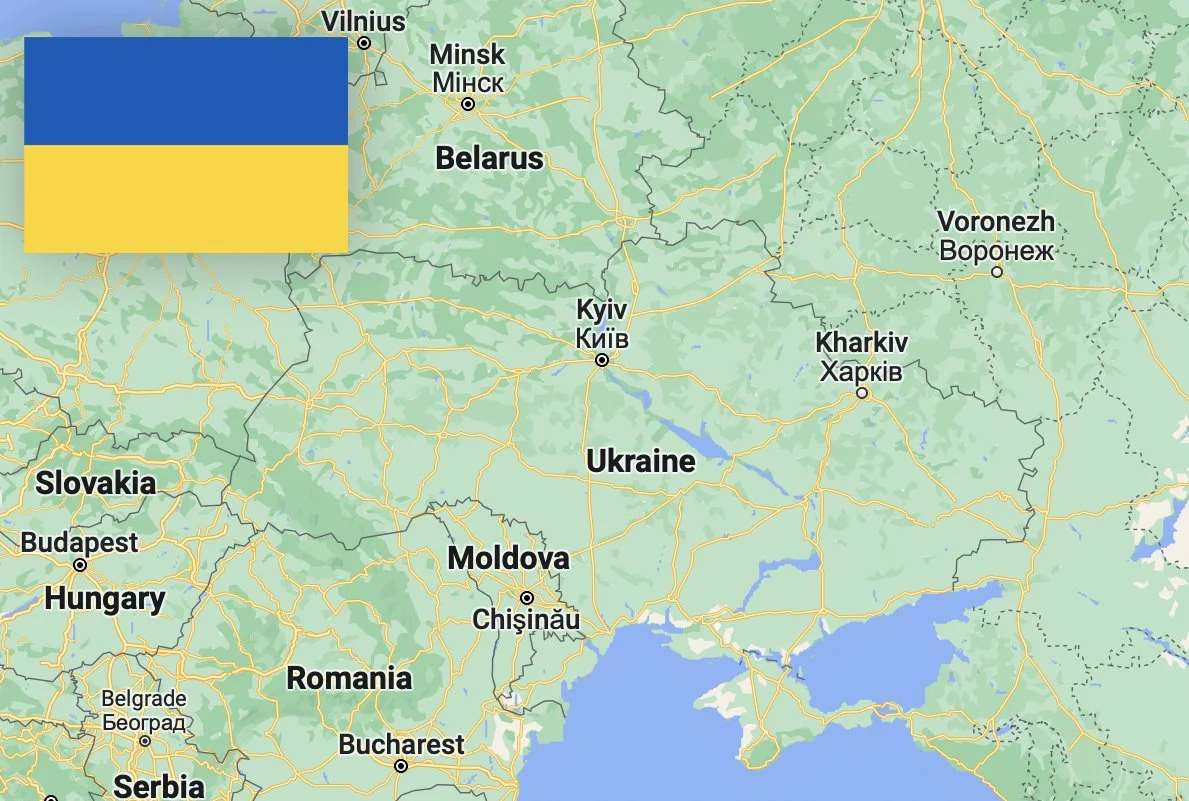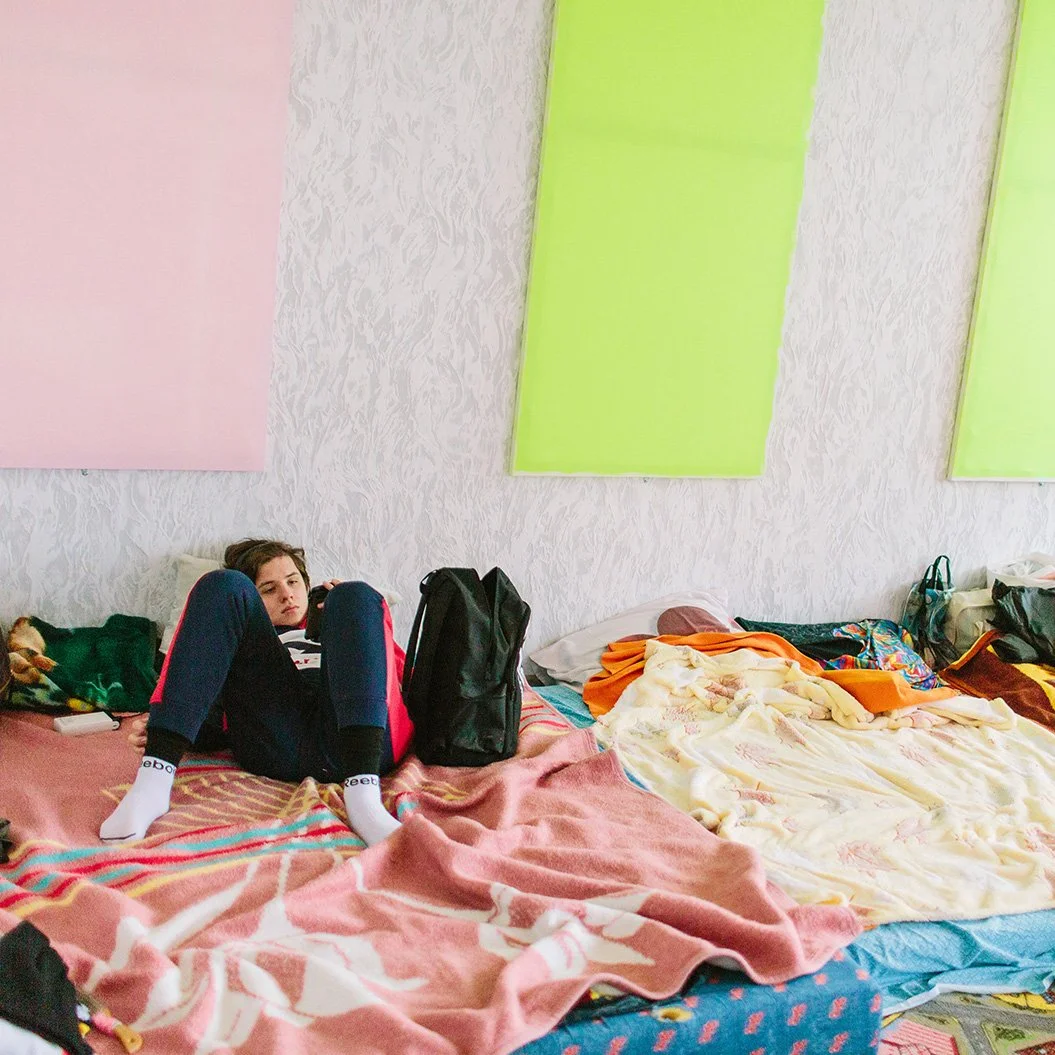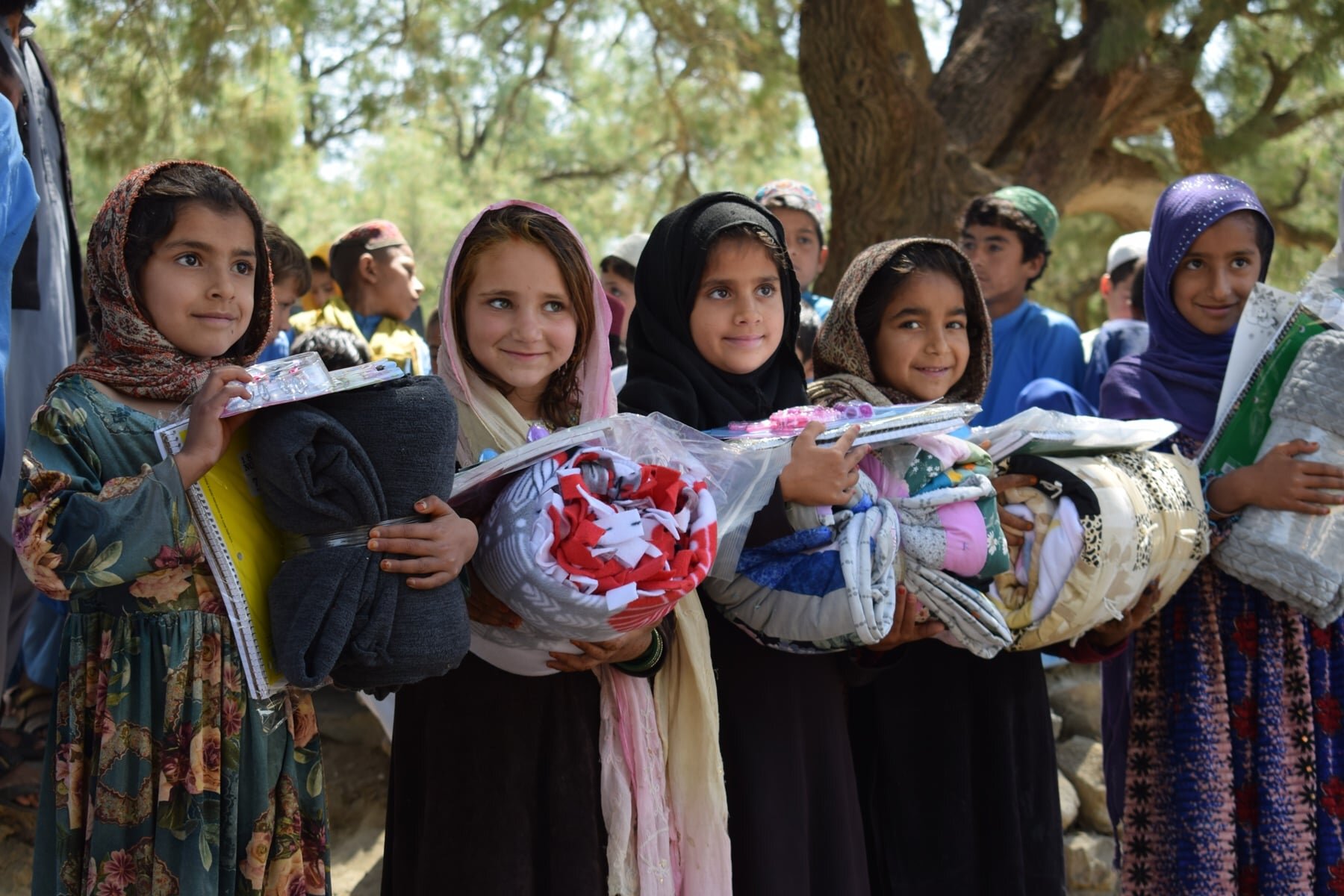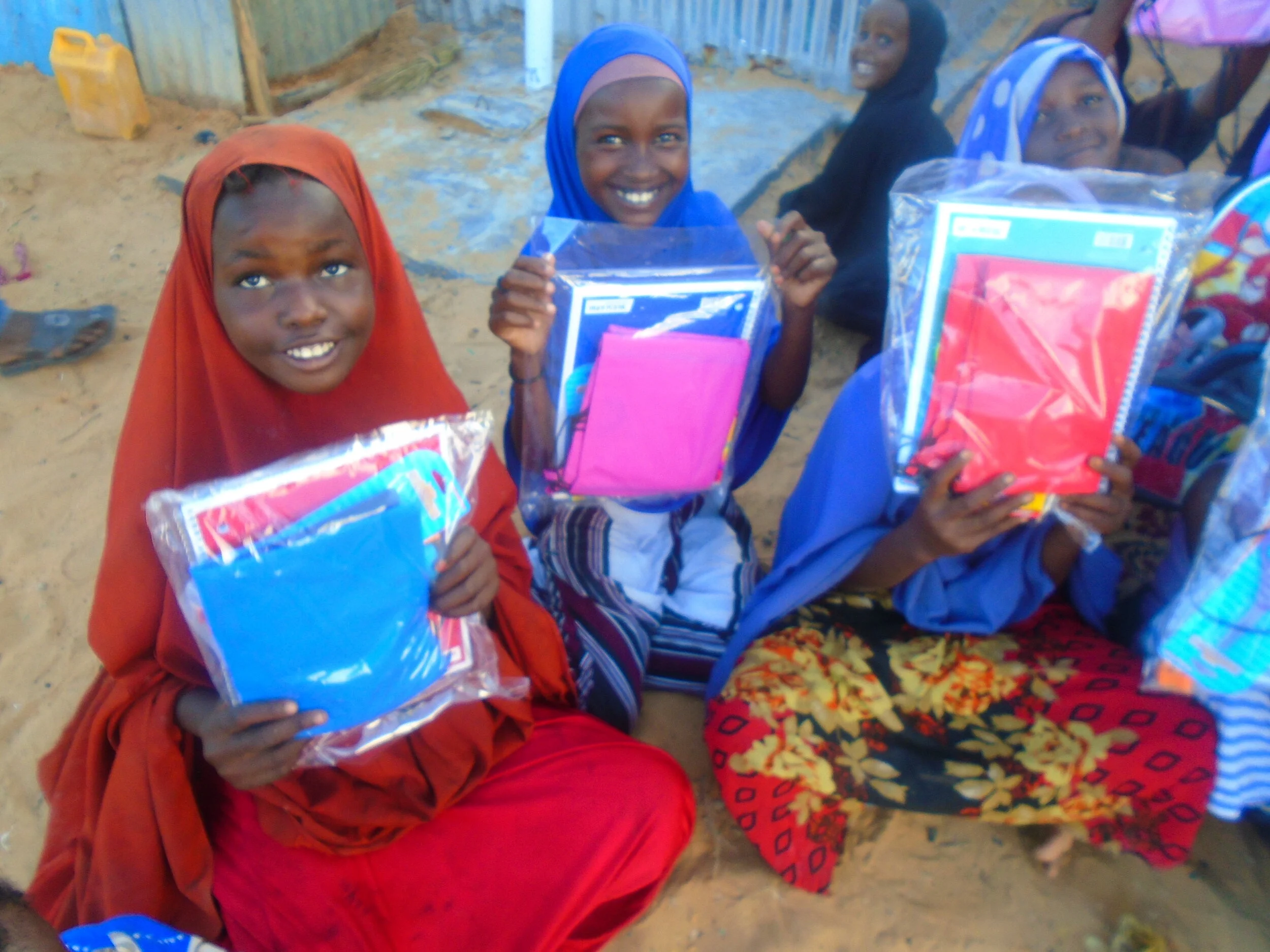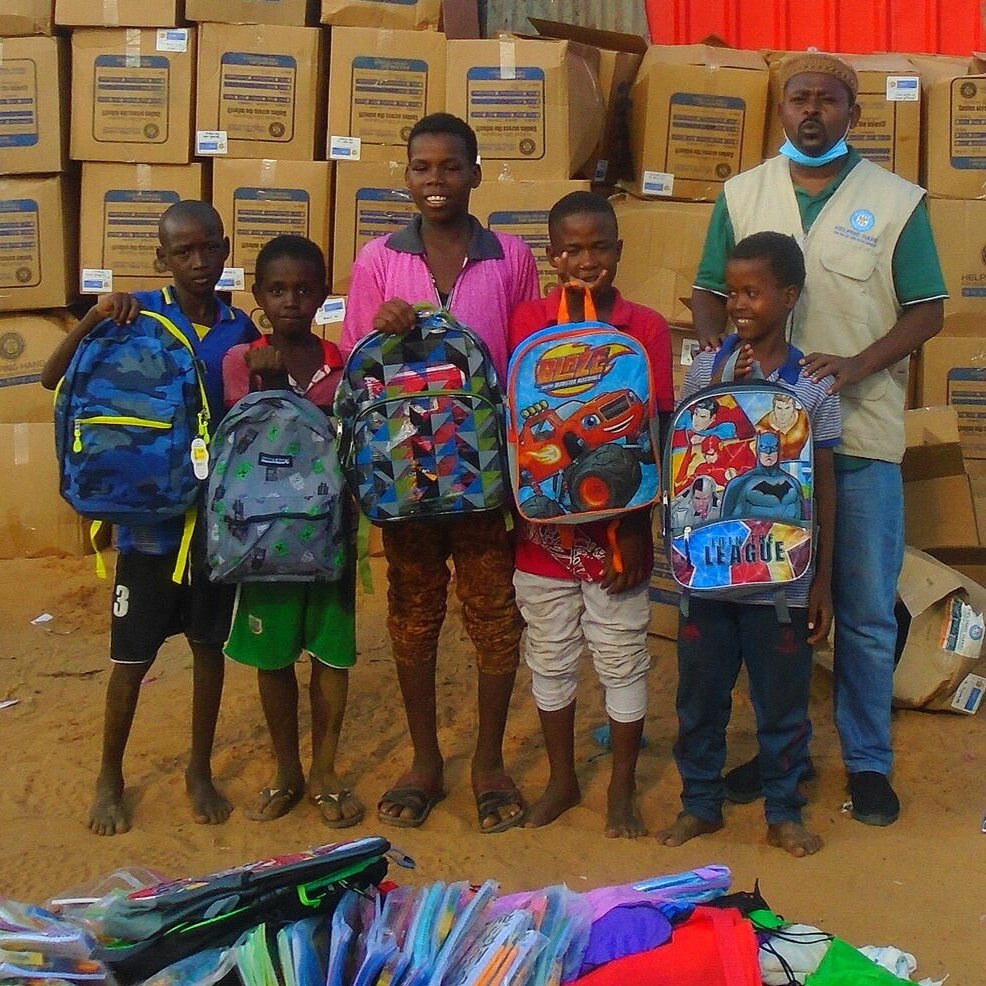DIFFERENT BACKGROUNDS, SHARED EXPERIENCES
The refugees LHI supports come from a wide range of locations and cultures. They have different traditions but share a common experience—having to leave everything behind, flee their homes, and try to start over somewhere else.
UKRAINIAN REFUGEES
On February 24, 2022, Russia began a full-scale invasion of Ukraine. Representing an escalation of the Russo-Ukrainian war that began with the Russian annexation of Crimea in 2014, it was the largest conventional military attack on a European sovereign state since World War II.
Within two weeks of the invasion, more than 1.7 million Ukrainians fled their home country as refugees to neighboring Moldova, Romania, Poland, Slovakia, and Hungary, and more than 160,000 Ukrainians remained internally displaced in Ukraine.
LHI responded by immediately sending a team into the region to evaluate the situation on the ground, and jumped in to help coordinate a massive volunteer efforts, empower local orgs with small grants, provide warm meals, establish a local emergency aid hub, tackle a major transportation issue, and establish the infrastructure needed to deal with the large number of refugees crossing out of Ukraine. Visit our Ukraine Response page for more information about this developing situation.
AFGHAN REFUGEES
On August 15, 2021, the Taliban entered the Afghan capital of Kabul, finalizing their takeover of the country. The world watched in horror day after day as desperate Afghans tried to escape. It was only two weeks later that the final US military cargo plane took off from the Kabul airport, marking the end of the US mission to airlift tens of thousands of Afghan refugees fleeing Taliban rule.
The US Department of Homeland Security subsequently launched Operation Allies Welcome, an effort to safely resettle vulnerable Afghans and those who worked with US troops in the country for the past 20 years. The process involves rigorous screening and vetting prior to receiving humanitarian parole into the US. Individuals and their dependents who then receive Special Immigrant Visas will be admitted as lawful permanent residents who can begin the resettlement process through the Afghan Placement and Assistance Program, in conjunction with resettlement agencies across the US.
When Afghan families are transitioned from military bases into residential housing, US Federal law requires refugee apartments to be fully furnished before families move in. However, unless the long list of housing items are donated, the cost of furniture and household supplies comes out of the family's already humble stipend. That is why LHI has partnered with the International Rescue Committee to assist with housing setup for refugees being resettled in Utah through our Afghan Refugee Aid program.
Learn more about our work with Afghan refugees in this Beneficiary Spotlight.
INTERNALLY DISPLACED AFGHANS (IDPs)
It is estimated that 1.8 million Afghans are internally displaced due to years of war, violent conflicts, economic problems, and natural disasters. Forced evictions displace more Afghans on a daily basis. Most lack adequate food, water, shelter, health care, and find few opportunities to pursue employment and education. Many settle on the outskirts of large cities, but pressure on local job markets and strain on infrastructure creates new conflict with local populations. Afghanistan launched a National IDP Policy in 2014 to protect the rights of those who are displaced and find solutions through different government agencies and other partners. But corruption, lack of capacity in the Afghan government, and fading international interest has resulted in the policy failing to provide reliable access to even basic living necessities. As a result, most IDPs have to travel long distances just to get water and often struggle to find one daily meal. LHI's International Aid program ships and distributes containers of critical aid supplies to these families in Afghanistan.
Learn more about our work with Afghan refugees in this Beneficiary Spotlight.
SYRIAN REFUGEES
The civil war in Syria has been raging since 2011, forcing hundreds of thousands of Syrian families to flee the lands they have called home for centuries in search of a better, safer life. They come from all over Syria, including war-torn Aleppo. Many make their way south to find refuge in northern Jordan. They live in small unofficial camps in the Jordanian desert where resources are scarce and just getting to the nearest town is too expensive for most families to do frequently. Most hope to return to Syria one day but realize it’s not likely that they will be able to. Many came from generations of goat and sheep herders, which is a well-respected profession in Syria. They all had to leave their flocks behind. Our Gather for Goats program provides families with milk goats that thrive in the harsh desert conditions, providing a consistent source of nutritious milk. And families often sell the baby goats, generating income to help regain their livelihoods. We've also provided Syrian refugees in Jordan and Lebanon with shipments of humanitarian aid supplies through our International Aid program.
LHI Founder/Director Hayley Smith with Umm Bisaam in Jordan.
Umm Bisaam, a wonderful Syrian woman living in a small camp with her relatives, said they were forced to flee their home near Aleppo when the bombs began falling too close. They travelled nearly 500 kilometers to an area near Al Mafraq, Jordan. One of the things from home she misses most (aside from the rest of her family) is the schools for her children. She points out that she can see Syria from their small camp in northern Jordan, but they cannot go there. Like most of the other 3 million+ refugees who have fled Syria, she hopes to return home one day. But she doesn't think it will probably happen.
Learn more about our work with Syrian refugees in this Beneficiary Spotlight.
YAZIDI REFUGEES
The Yazidi refugees living in Greece are survivors of the 2014 ISIS genocide in and around Sinjar, Iraq. Thousands of Yazidi men were killed and thousands of Yazidi women and girls were forced into sexual slavery by ISIS. Many survivors had no choice but to flee their ancestral lands in Northern Iraq to Turkey, where they made the harrowing journey in an inflatable raft across the Aegean Sea to Greece (painfully, many didn’t make it). LHI’s Refugee Center in Greece has provided an array of services to meet the needs of Yazidi refugees living in camps in Serres. Additionally, LHI’s Greatest Need program has provided solar lights to thousands of Yazidi families living in refugee camps in northern Iraq. Most of these camps do not have electricity, and one solar light provides a family with light, safety, and the ability to cook after dark.
Kordi is one of the fortunate Yazidis who survived the ISIS genocide and escaped Iraq with her family to Greece.
Kordi is one of the survivors. She is a mother to five girls and one son. She and her family had been celebrating the Yazidi summer festival when ISIS came and caught them off guard at around 6:00 pm one evening. ISIS took the men into to the streets to kill them there. Three of her cousins, her husband, and her uncle were forced to put their hands on the back of their heads and line up in the street. Just then, some neighbors came into where the women were. They knew it was their neighbors and friends from the past, even though they were all wearing black clothes on were covering their faces. One of them put his hand on another’s gun and said “Put it down, these women are helpless and can't flee, let’s go somewhere else.”
When that happened, the men ran back inside, their skin yellow from fear. Even though they were spared, ISIS went to the other houses, took all the other men outside and killed them. They stacked the bodies on top of each other in a huge pile. Their women were screaming and running through the dead bodies trying to wake up their husbands and brothers. The soldiers pulled them by their hair and threw them into cars. Kordi and her family fled to their garden to hide until morning. ISIS spent that whole night searching through her village for survivors. In the morning, Kordi and her family fled.
Learn more about our work with Yazidi refugees in this Beneficiary Spotlight.
ROHINGYA REFUGEES
The Rohingya people are a stateless ethnic group who have faced decades of persecution and violence in Myanmar. In fact, the United Nations lists them as one of the most persecuted groups in the world today. Despite maintaining that they have been indigenous to the area for more than 1,000 years, they are denied citizenship under a 1982 Myanmar nationality law, and are restricted from freedom off movement, state education, and civil service jobs. Their legal situation has been widely compared to apartheid in South Africa. Entire Rohingya villages have been burned to the ground, families separated and killed, and women and girls gang raped.
About a million Rohingya refugees live the world’s largest and most overcrowded camp in Bangladesh.
About a million Rohingya refugees have fled Myanmar and now live in the world’s largest refugee camp in Bangladesh. The kind Rohingya man pictured spoke enough English when LHI Founder/Director Hayley Smith visited in 2017 to plead, "Please don't forget us." He and his family live in the horrific conditions in the camp described above. LHI’s International Aid program collects and distributes critical aid to residents there. We have also provided 50,000 hot meals to children living in the camp through our Greatest Need program. These are two ways we are keeping our promise to him.
CENTRAL AMERICAN REFUGEES
The Northern Triangle of Central America, composed of Guatemala, Honduras, and El Salvador, is considered one of the most dangerous places on earth, resulting in unprecedented numbers of individuals and families fleeing for their lives (most of the refugees crossing at the southern border in recent years are from these three countries, though some are from other countries including Venezuela, Brazil, Cuba, Haiti, and African nations). Their home countries are in a state of political upheaval and gangs are rampant, threatening families with death if they do not pay, join, or do their bidding. For many, heading north is the only option.
After arriving in the US, families are held at detention centers and put through preliminary processing before being dropped off at shelters along the border that provide warm meals, showers, and a place to stay for a short time. This gives families time to figure out how to get where they are going, which is often to stay with relatives already living in the US. LHI collects and delivers aid to shelters along the border that support these families through our US Border Aid program.
Eduardo shows some of the scars that remain after he was attacked by local gang members with machetes for not agreeing to sell drugs through his family’s fruit stand in Honduras. Photo provided by Their Story is Our Story.
Pictured here is Eduardo, who worked at his family’s fruit stand in Honduras. He was told by local gang members that they wanted him to sell drugs stashed in the middle of his fruit. He did not comply, and they told him they would kill him, his family, and his children if he didn’t do it. Again he said no. One night, Eduardo was followed by 7 or 8 gang members armed with machetes and pistols. He had to run and hide in a sewer to keep from being captured and killed. They went to his house to find his wife and two children, but fortunately, they were with his mother at the time. Later, they caught up with him and tried to kill him with machetes, but he escaped despite being struck several times. He now lives with numerous scars on his arms and legs. Of his group of 27 childhood friends, only three are left. All the others were killed, or are in jail, on drugs, or in gangs. For that reason, he left his country to seek safety in the US.
INTERNALLY DISPLACED SOMALIS (IDPs)
Decades of violence and government instability—compounded by natural disaster, drought, and lasting food shortages—has created a situation where more than 2 million people are internally displaced in Somalia. Crops are failing and livestock dying. While Somalia struggles with its own vulnerable people, tens of thousands of refugees, mostly from Ethiopia and Yemen, are fleeing into Somalia to try to find refuge there, putting additional pressure on already scarce resources. Many internally displaced Somalis lost their livelihoods when they were driven from their homes and are dependent on humanitarian services for survival. LHI’s International Aid program collects and distributes industrial-sized containers of critical aid supplies to Somalis living in IDP camps near Mogadishu, where the cost of living is much higher than in Somalia’s more rural areas.
REFUGEES IN TRANSIT
The lifejacket graveyard on Lesvos Island, Greece, represents the hundreds of thousands of refugees who made the dangerous journey from Turkey to Greece across the Aegean Sea.
The European Commission defines refugees in transit as refugees who are temporarily admitted in the territory of a state under the condition that they are resettled elsewhere. In other words, they are families who have been forced to flee their homes and have arrived in a safer country where they are not allowed to stay permanently. These refugees are from varied backgrounds and ethnicities, but all are escaping violence, conflict, persecution, poverty, gender inequality, or other life-threatening conditions (including consequences of climate change and environmental degradation).
In many areas of the world, an increasing number of families are forced to flee their homes and embark on perilous journeys in search of safety. Many face abuse and exploitation in transit. Despite technological advances making travel faster and safer for many refugees, the journey can still take months. Once abroad, most refugees will spend several years in a transit country before being resettled elsewhere, and some may never reach their intended destination. Additionally, their route, method of transportation, and intended destination can change at different phases of their journey, causing them to fall in and out of various legal categories. This period of being “in limbo” can be devastating both physically and mentally as families often face poor living conditions as well as perpetual uncertainties and delays.
LHI's Refugee Center in Greece provides psychosocial programs for refugees while they stay in the nearby Serres camps awaiting resettlement in other countries. The program also provides aid supplies for families in the camps along with other refugees staying in the surrounding areas.
“It’s strange, how you go from being a person who is away from home to a person with no home at all. The place that is supposed to want you has pushed you out. No other place takes you in. You are unwanted, by everyone. You are a refugee.”


